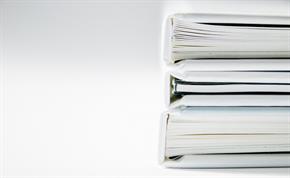
Making information accessible for everyone is the responsibility of every member of the Trust. Part of the work we do in the communications team concerns making documents accessible before they are published on any of the Trust platforms, but there are some steps that can be taken before this document reaches us.
Accessibility is about how easily information or resources can be accessed and utilised by people with a variety of needs. It allows all Trust colleagues and members of the public to work at their very best, without having unnecessary challenges put in their way. This is why all Trust documents must be sent for accessibility checks before they can be published, internally or externally.
Moreover, meeting accessibility standards is a legal requirement under public sector accessibly regulations. The Trust is required to adhere to accessibility standards and failure to do so could result in being brought to the attention of the European Human Rights Commission (EHRC).
As a communications team, we cannot upload documents to any of our sites if they are not fully accessible.
When you have a document of any type that is ready to be published, you’ll need to send it to webteam@eastamb.nhs.uk so that a member of the team can ensure that it passes accessibility checks and has been tagged effectively for screen readers. We have robust methods in place and are always working to improve these to make them more efficient and effective.
When you send a document to us to be checked, we do a visual front-end inspection, checking for any formatting errors, incorrect fonts styles or sizes, and potentially problematic colours. We then make any changes that are needed to bring the document in-line with both accessibility standards and brand guidelines.
Then comes the back-end accessibility check. This involves using software to ensure that all images have alternate text, that all features of the document are correctly tagged, and that those tags are in a logical reading order. Depending on the size of the document, these checks can be anything form a matter of minutes to multiple hours, so please bear with us while we work on your documents.
Please ensure that you send documents to us in both PDF and original editable format, where possible. This will make it far easier for us to ensure that any changes can be made without having to delay the process or compromise the document by running it through conversions. Where this is not possible, for example in the case of documents that have come from an external source, please send us the link to where the document is hosted on the external site so we can share that link instead. If this is not possible, let the webteam know and they will advise on next steps.
All of the basic templates for common Trust documents have been set up to make following accessibility guidelines as easy as possible. Please ensure you are using the correct and accessible template when starting your document, which can be found on the Templates page on East24, and that steps have been taken to adhere to branding and formatting guidelines, which can be found in the Creating Accessible PDFs Guide. If you can’t find what you’re looking for please get in touch with us at webteam@eastamb.nhs.uk.
Over the next year, we are hoping to offer plenty more information, advice, and training on how we can improve our accessibility standards once and for all. In the meantime, please do not hesitate to contact our Web Accessibility Officer, Sean Bennett (sean.bennett@eastamb.nhs.uk) if you ever have any questions or concerns about specific documents or our accessibility check system in general.
Published 28th January 2022